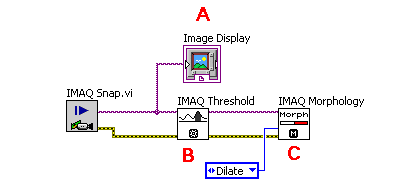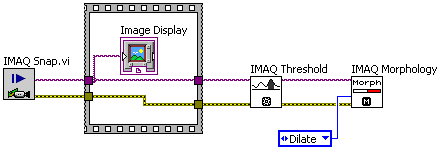Solution
Image data types are stored differently to normal datatypes (eg. integers/strings/booleans), this means race conditions can be caused in situations where normal datatypes would not cause them.
To ensure this doesn't happen, functions accessing the image need a defined execution order.
For example the following block diagram shows two functions where the order of execution is not defined. Either Image display (A) or IMAQ Threshold (B) will execute first but we don't know which. IMAQ Mophology (C) will still always execute last.

One method to ensure the image is displayed (A) before processing begins (B) is to place the function you want to happen first in a sequence structure. There are other ways to establish execution order, this is just an example. This shown in the figure below.
